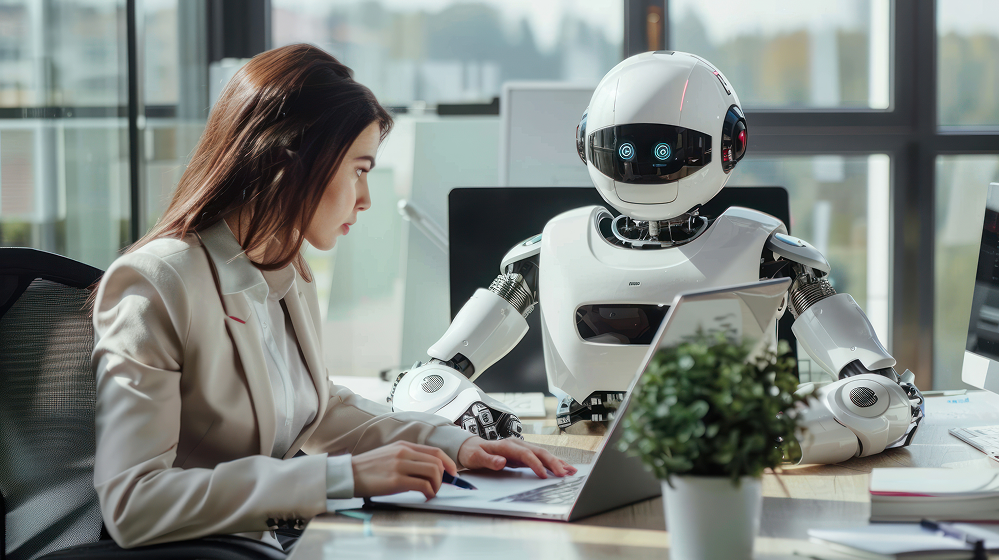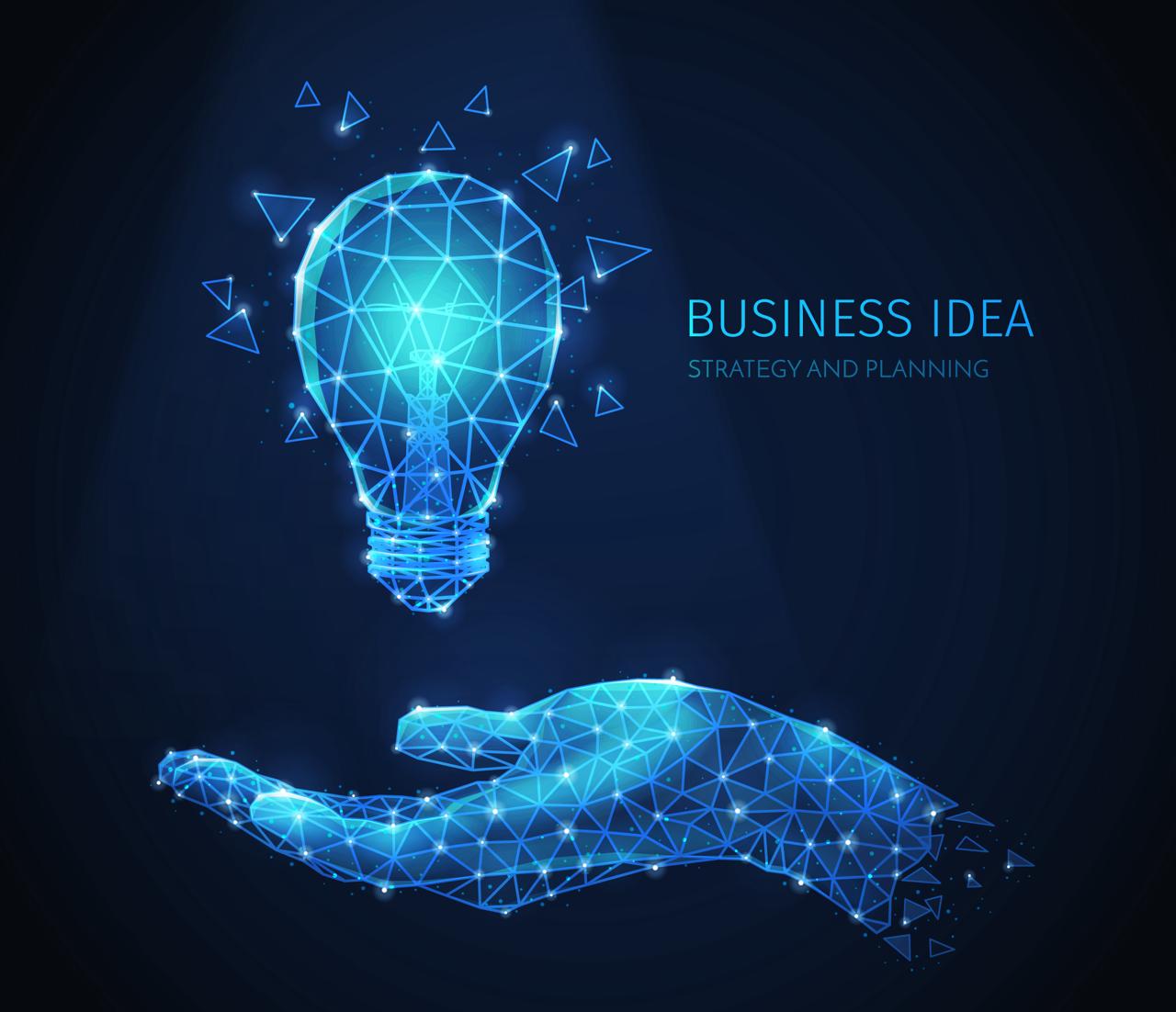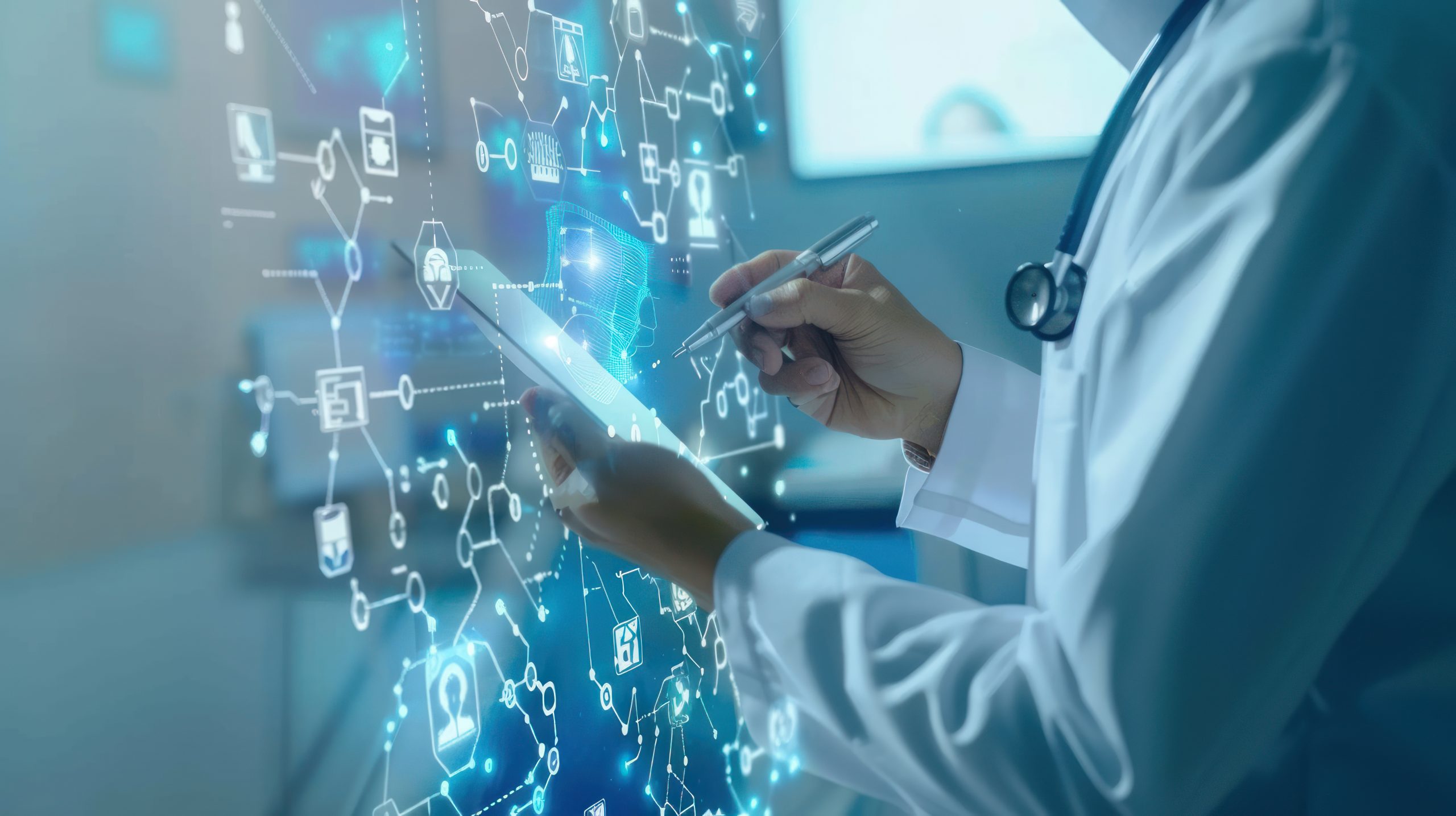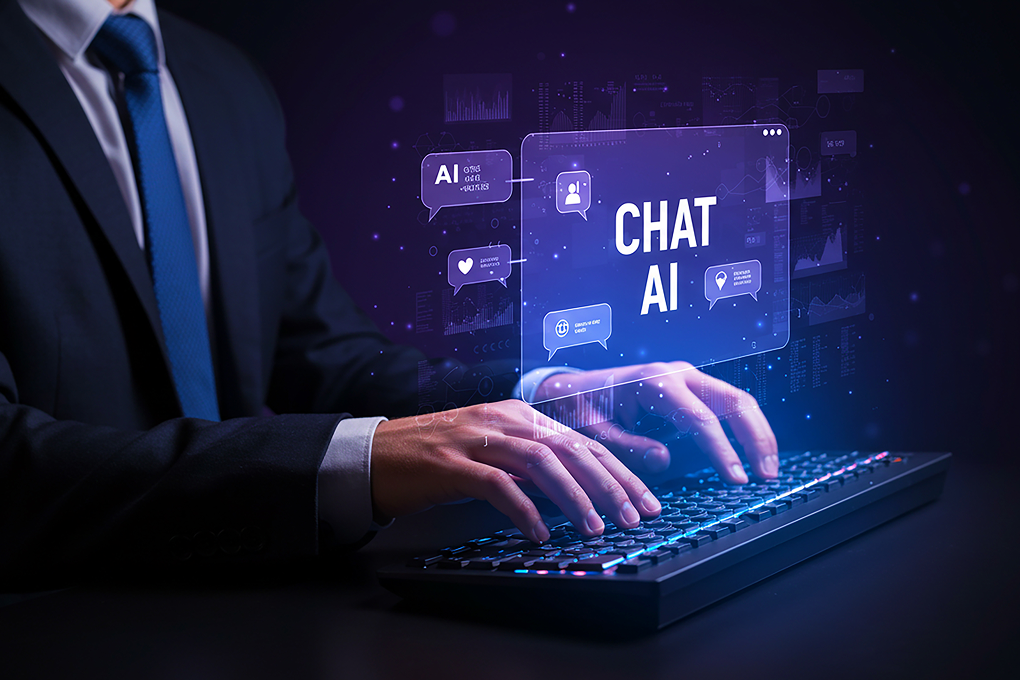Today is the time for the workplace revolution. AI is changing how human resources professionals work from talent acquisition to employee engagement. Some people may fear that AI will replace them entirely, but there’re lots of nuances and it’s hardly ever going to happen. Smart HR leaders are discovering that AI tools for human resources aren’t replacing human judgment—they’re amplifying it.
From generative AI streamlining recruitment processes to AI agents handling routine inquiries, the integration of artificial intelligence in human resource management is creating unprecedented opportunities for strategic growth. Today HR workers who use these AI solutions feel it is easier and more free from administrative burdens. They can focus on their direct responsibilities: building meaningful workplace cultures and developing human potential.
This comprehensive exploration reveals how AI is transforming HR practices, which tools deliver real results, and why the future belongs to professionals who can seamlessly blend human insight with artificial intelligence capabilities.
What is AI in HR?
AI in human resources represents a fundamental shift in how HR teams work. Think of it as giving your HR department a highly capable assistant that never gets tired, can process thousands of resumes in minutes, and helps identify patterns you might miss. But unlike science fiction portrayals, this technology doesn’t replace human judgment—it amplifies it.
At its core, AI in HR refers to the application of smart technologies to transform traditional HR functions and processes. It involves using a combination of algorithms, machine learning models and intelligent systems to automate repetitive tasks, gain deeper insights from HR data and support decision-making across an organization. What makes this particularly exciting is that AI provides substantial benefits, enabling HR teams to operate more efficiently and focus on tasks that truly require a human touch.
Once you understand the benefits it brings to HR work, you get really surprised. There’s no need to spend hours screening applications by hand, you can spend this time on interviews and conversations with candidates. Rather than drowning in administrative paperwork, they can invest time in building workplace culture and developing talent strategies. AI can not only automate tasks like payroll and benefits administration, but also create new policies, contracts, job descriptions, and interview questions.
Today’s HR AI tools encompass everything from chatbots and voice technology to natural language processing, automation, and AI agents that handle routine inquiries to sophisticated analytics that predict employee turnover months before it happens. The technology processes information at speeds impossible for humans while maintaining the nuanced understanding that complex workplace decisions require.
AI Governance and AI Adoption
The biggest roadblock to AI adoption in HR isn’t technology—it’s governance. Recent research reveals a sobering reality: two-thirds of organizations have no governance model at all for AI implementation. While some companies treat AI like any other technology purchase, this approach fundamentally misses the mark. AI requires unique oversight because it directly impacts hiring decisions, employee evaluations, and other critical HR functions that carry legal and ethical implications.
Organizations without proper AI governance face significant barriers to adoption. The lack of clear guidelines creates uncertainty around compliance, ethics, and liability—causing HR teams to hesitate or avoid AI tools altogether. Only a tiny fraction of organizations have governance models specifically designed for AI in HR, despite the function’s unique data requirements and regulatory considerations.
If you want to succeed in AI usage, make sure to add transparency, fairness, and accountability. Organizations are required to set up clear policies for AI decision-making, regular bias audits, and human oversight protocols. Companies that invest in robust AI governance early position themselves to capture AI’s benefits while minimizing risks and building employee trust in these powerful new tools.

Types of AI Used in HR
Modern HR departments leverage multiple types of artificial intelligence, each serving distinct functions within the employee lifecycle. If you understand these technologies you can easily choose the right tools and apply them for certain challenges and opportunities.
AI Agents
Smart computer programs are now doing HR work on their own. They make decisions without someone watching over them constantly. These programs get better at their jobs over time. Finding new employees is easier now. These AI programs search job websites automatically. They look through LinkedIn and other career sites. When they find good matches, they flag them for review. The AI also handles employee sign-ups for health insurance and retirement plans. Workers ask questions about their benefits. The AI gives them answers right away. Laws change all the time. Companies need to keep up or they get in trouble. AI programs watch for new regulations every day. They update company rules before deadlines hit. Companies save money with these tools. They also make fewer mistakes on routine tasks. Employees get help faster when they have questions.
AI Assistants
These aren’t basic chatbots. They’re much smarter and remember your past conversations. New employees get confused their first week. AI assistants guide them through everything. Forms, benefits, meetings. It’s like having help available anytime. It also helps workers prepare for performance reviews. It reminds them about accomplishments and suggests discussion topics. Vacation policies, time-off requests, enrollment dates. AI handles these instantly. This frees HR staff for bigger projects. They focus on strategy instead of basic questions all day. The assistants understand when someone sounds frustrated. They send complex issues to real people when needed.
Automation and Robotic Process Automation
While not technically AI in the strictest sense, automation technologies complement intelligent systems by handling repetitive administrative tasks. These instruments are good at working with data entry, payroll processing, and basic applicant filtering. They can keep employee records very accurately and process routine transactions without human help. It greatly reduces administrative burden.
Generative AI
Perhaps the most transformative type, generative AI creates entirely new content based on learned patterns from training data. In HR contexts, it rapidly produces comprehensive job descriptions, tailored interview questions, and personalized educational materials. Generative AI offers help in creating policy updates, employee communications, and developing training content. It saves days or weeks of human effort.
Natural Language Processing
Computers now understand human language well. They read text and figure out what people mean. NLP analyzes employee surveys automatically. It spots patterns in feedback and reads emotions. Companies catch problems early. Resumes get sorted faster. The system pulls out skills and groups similar candidates. It watches workplace communications too. Emails, chats, discussions. It notices mood changes. Performance reviews become simple summary reports. Managers see common strengths and issues quickly. This helps companies understand workplace health better.
Predictive Analytics
AI uses historical data patterns in order to predict and forecast future HR scenarios with remarkable accuracy. These systems anticipate staffing needs based on business trends, predict employee turnover risk, and identify potential performance issues before they escalate. They analyze compensation structures during reviews and help forecast necessary learning opportunities as workforce skill requirements evolve.
Conversational AI
Smart chat systems now talk like real people. They combine different AI tools to sound natural. Employees can update their info by just asking. Need to change your address? Just tell the system. Want feedback on a project? Ask for it. The AI remembers what you talked about earlier. Long conversations make sense. It doesn’t forget details from five minutes ago. HR questions get instant answers. No waiting for callbacks or emails. The system handles most requests right away. These tools feel easy to use. Like texting a helpful coworker who knows company policies.
Deep Learning
The most sophisticated form of machine learning, deep learning analyzes complex HR data patterns to provide directional insights and recommendations. It creates individualized suggestions for learning paths, role transitions, project assignments, and mentorship connections based on comprehensive analysis of employee data, skills, and career trajectories.
How HR Departments Tend to Use AI
HR teams are finding AI useful for everyday work. It’s not just hype anymore. It’s a real toolbox that helps them hire, train, and keep good people.
Finding New Employees
Nobody reads hundreds of resumes by hand anymore. AI scans job sites and LinkedIn fast. It finds people who match what companies need. These systems don’t just look for buzzwords. They understand context. They spot skills that human recruiters might miss. Interview scheduling happens automatically now. The AI writes transcripts during calls. Some platforms create custom job posts for different audiences. Companies hire faster with less bias. They get better matches too.
Getting New Hires Started
First days matter a lot. AI gives each new person a custom welcome experience. Virtual assistants explain company rules at their speed. Smart systems set up accounts and handle paperwork automatically. Technology watches how new people adjust. It flags anyone who needs extra help. This makes smoother starts. More people stay at their jobs. HR teams do less busy work.
Growing Careers
AI makes career growth personal instead of generic. Learning platforms study how each person performs. They look at learning styles and career goals. Then they suggest specific courses, mentors, or new projects. The systems keep adapting based on progress. Planning for future leaders becomes data-driven. Companies identify talent through real analysis instead of guesswork.
Tracking Performance
Yearly reviews are going away. AI enables ongoing performance talks instead. Smart systems track feedback and project results. They spot trends across teams. The technology catches problems early. It suggests help or training before things get bad. Some platforms gather data for promotions automatically. Managers spend time on real career conversations.
Keeping People Happy
Understanding what employees want is more precise now. AI studies communication patterns and survey answers. It even looks at calendar data to measure satisfaction. The technology predicts who might quit. Personalized messaging adapts to how each person likes to receive information. Self-service portals answer common questions instantly. This creates workplace experiences that feel made for each person’s needs.
Administrative Operations
The mundane tasks that once consumed HR professionals’ time are increasingly automated. Data entry, payroll processing, and compliance monitoring happen seamlessly in the background. Workforce analytics platforms crunch vast amounts of employee data to generate strategic insights, while automated systems flag potential regulatory issues before they become problems. This operational efficiency allows HR teams to focus on the human side of human resources.
Elevate Employee Experience
AI creates special moments during someone’s time at work. It sends personal welcome messages to new hires. It suggests benefits that match what each person needs. Smart systems know what employees want before they ask. Does someone seem stressed? The AI recommends wellness programs. Ready for a new challenge? It suggests career opportunities at the perfect time. Every interaction feels meaningful and useful. The technology makes work feel more personal and supportive.
Supporting Learning, Development, and Upskilling
The pace of change demands continuous learning, and AI makes it manageable. Intelligent platforms identify skill gaps before they impact business results, then recommend targeted training solutions. Microlearning systems create lessons at optimal times, and AI coaches offer continuous feedback and encouragement. The technology helps to adjust investmentswith both individual desires and organizational needs.
Transforming Performance Management and Retention
Old performance reviews felt pointless. They happened once a year and didn’t match daily work reality. AI keeps track of performance data all the time now. It gives real-time insights that are really helpful. Feedback becomes relevant and useful. The technology can find people who might quit months ahead of time. Companies can act early to keep good workers. HR specialists can focus more on ongoing growth conversations than yearly reviews. This leads to better performance and job satisfaction.
Smart Workforce Planning
Planning used to rely on spreadsheets and guesswork. AI analyzes internal data and market trends instead. It predicts future staffing needs with surprising accuracy. These systems test different scenarios. Leaders see workforce impacts before making big decisions. Organizations become more flexible. They adapt quickly to market changes while keeping the right talent levels.
Benefits of AI in HR
The transformation that AI brings to human resources isn’t just theoretical—it’s delivering measurable results across organizations of every size. Here’s how smart HR teams are reaping the rewards of intelligent automation and data-driven insights.
Getting More Done
AI removes boring repetitive tasks. HR people can focus on what really matters. Building great workplace culture. Developing talent. Unilever shows how well this works. They get over a million job applications each year. They used machine learning to analyze candidate videos and answers. Result? Hiring time dropped 75%. They also got more diverse candidates. AI freed their team to do meaningful work instead of sorting through endless applications. General Electric’s “Wingmate” AI assistant demonstrates productivity gains on the employee side—within just three months, it handled over half a million queries, helping employees summarize manuals, resolve quality issues, and draft communications more efficiently.
Data-Driven Decision-Making
Gone are the days when HR decisions relied primarily on gut instinct. AI turns gut feelings into real evidence. HR teams get solid data instead of just hunches. The technology predicts problems before they get big. Teams can fix issues early instead of reacting later. Consistent measurement happens across all departments. Everyone gets judged by the same fair standards. This creates better strategies based on actual facts. RingCentral exemplifies this shift perfectly—by partnering with an AI talent search solution that combines external data points with internal information, they achieved a 40% increase in their recruitment pipeline, 22% improvement in candidate quality, and 40% boost in interest from underrepresented groups.
Better Employee Experience
Today’s workers want personal and quick interactions. AI gives them exactly that. Smart systems answer questions instantly. No matter what time zone. No more frustrating wait times that annoy employees. AI-powered workflows cut through red tape. Personal career development offers guidance that fits each person’s learning style and goals. These aren’t just nice extras. They directly help keep people at their jobs and keep them engaged.
Smarter Strategic Planning
AI moves HR from paperwork to real business strategy. Workforce intelligence shows deeper understanding of what employees need. This enables better talent management strategies. AI analyzes workplace data patterns. Organizations learn about future job requirements and needed skills. HR becomes a true business partner instead of just administrative support. This strategic repositioning creates greater organizational value while allowing HR professionals to focus on complex human capital challenges that require emotional intelligence and strategic thinking.
Reduced Costs
The financial benefits of AI implementation extend far beyond simple automation savings. A major fast-food chain used workforce technology to cut overtime costs and empty shifts by 25%. They got the right number of workers at the right times. Customer service improved too. Manipal Health Enterprises saw even more dramatic results with their MiPAL virtual assistant, which reduced new hire turnover by 5% annually and saved over 60,000 hours for employees and HR teams combined.
Better Decisions and Fewer Mistakes
AI processes information with high accuracy. It cuts human errors in data entry, payroll, and compliance tracking. Automated systems keep standards consistent across all HR work. This ensures fair treatment and follows regulations. The accuracy helps most with complex tasks like promotions and pay analysis. Small mistakes in these areas can cause legal and money problems.
Keeping Good People
AI spots employees who might quit months before they actually leave. It studies communication patterns, performance trends, and engagement signs. This early warning lets HR teams fix problems before people resign. Companies keep valuable knowledge and avoid expensive hiring cycles.
Focus on Big Picture Work
AI handles routine tasks automatically. HR professionals can work on strategic projects that help the business grow. Teams spend more time on culture building, leadership development, and organizational design. This shift from busy work to meaningful work makes HR jobs more satisfying. Organizations get more value too.
Personal Learning Plans
AI creates custom development experiences for each person. It studies learning preferences, career goals, and skill gaps. The system recommends specific courses, mentors, or new assignments. Everything fits each employee’s unique situation. The technology keeps adapting based on progress and feedback. Learning investments work better for both people and companies.
Problems with AI in HR
Though AI is able to make HR work easier and more effective, companies still face real challenges that must be solved.
One of them is trust issues. Employees want to know how AI makes career decisions. People need to understand how performance reviews, promotions, and job recommendations are done by AI. Most workers feel uncomfortable when AI handles sensitive data or monitors their work. These areas still need human judgment and empathy.
There’re also bias problems. AI is supposed to reduce discrimination, but often it happens just the opposite. Systems learn from biased training data and repeat those problems. This hurts hiring and promotions badly. Biased algorithms can systematically harm certain groups. As a result, companies must regularly conduct bias checks and human oversight.
People worry about privacy. HR deals with sensitive employee information. AI needs lots of personal data to work well. Employees worry about how their information gets collected, stored, and used. Companies must think about certain AI limits.
And moreover, people tend to resist any change. Many employees fear AI will replace them completely. This creates pushback against new systems.
Organizations often lack technical skills to implement AI properly. They need big investments in training or outside help.
Automation improves efficiency but shouldn’t replace human judgment. Complex situations still need emotional intelligence, cultural awareness, and ethical thinking. Success means finding the right balance between technology and human insight. AI should support people, not replace them entirely.
Data Accuracy, Privacy, and Security Issues
HR departments sit on goldmines of sensitive employee data, making AI implementation both powerful and perilous. The biggest trap? Poor data quality leads to poor decisions. AI systems train on outdated performance reviews, incomplete salary records, or biased historical hiring data, and as a result, they perpetuate problems rather than solve them.
Security problems represent an even more dangerous reality. Several most popular AI platforms have already suffered data leaks. And a lot of personal employee information has leaked through code vulnerabilities. Imagine your salary details, health records, or performance evaluations floating around the internet because of a security flaw.
The privacy puzzle gets more complex when AI vendors share company data with external systems without clear consent. Employees don’t like sharing personal problems with chatbots. They worry about where that information goes and who sees it.
Good companies pick AI providers carefully. They demand data isolation and strong encryption. They make sure personal information never gets shared with outside models.
Being open about data use builds employee trust. Regular security checks protect against breaches that could hurt both careers and company reputation.
Top AI Tools for HR: Essential Solutions for Modern Workplace Management
The HR world changed fast when AI showed up. Companies now have new ways to hire people and keep them happy at work. These tools help with everything. Finding good candidates. Training employees. Making sure people don’t quit. Every type of business uses them now. We picked the 20 best AI tools that HR teams actually rely on. These are the ones making real differences in how companies manage their people.
Employee Engagement and Experience
Lattice Engagement Insights
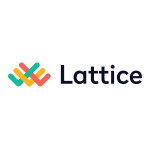
Lattice speeds up employee feedback big time. Survey comments used to take days to analyze. Now it happens in seconds. When surveys end, HR gets key trends and action steps right away. The Employee Health Score spots people who might quit. Managers get the info they need to keep good workers. This catches problems early. Before people actually leave their jobs.
Thrive Global

Thrive watches how people work and spots burnout early. It studies digital habits and how employees communicate. The platform sends personal tips and coaching to reduce stress. It helps people bounce back faster. HR teams use these insights to build better wellness programs. This creates healthier workplaces that last.
Woebot
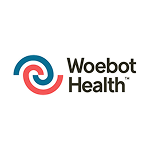
This chatbot brings therapy techniques to work. It offers mental health help any time of day. Woebot checks in with users and spots stress patterns. It gives science-based strategies to feel better. Works through Slack or phone apps. Makes mental health help easier to get. Reduces shame around asking for support.
Ultimate.ai
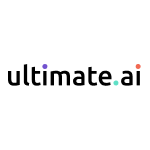
Ultimate makes HR chatbots that handle employee questions fast. The system understands natural language well. Gives accurate answers quickly. Response times drop way down. Employee satisfaction goes up. HR people can work on bigger strategic projects instead of answering basic questions all day.
HR Operations
Wisq

Wisq stands out with its agentic assistant named Harper and proprietary HR language model designed specifically for HR teams. The platform automates routine tasks like policy interpretation, employee relations, and case management while ensuring compliance and improving accuracy. Wisq provides context-aware support by integrating company-specific data, documents, conversations, and culture, making it a comprehensive operational solution.
BrightMine
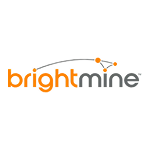
BrightMine watches labor laws automatically. HR teams stay compliant without doing manual research. The AI scans employment law changes across different locations constantly. It flags when company policies don’t match new rules. This cuts legal risk and saves research time. Companies avoid costly legal problems by staying ahead of regulation changes.
Personio
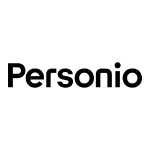
Personio puts employee records, benefits, and payroll in one place. The AI-driven system handles data management and HR processes smoothly. This boosts efficiency and cuts mistakes. HR professionals spend less time on paperwork. More time on strategy and helping employees grow. Everything stays organized in a single system instead of scattered across different tools.
Compliance.ai
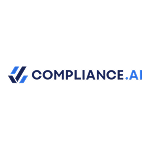
This platform applies natural language processing to legislation, regulations, and case law to detect updates that may impact HR operations. Compliance.ai provides daily alerts and contextual analysis, helping HR teams stay proactive in adjusting to evolving legal requirements. The system’s ability to interpret complex legal language and translate it into actionable insights makes compliance management more manageable.
Performance and Productivity
Lattice Performance Summarization
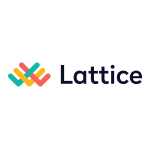
Lattice’s performance management tools enable managers to instantly draft better employee performance reviews based on individual goals, feedback, growth areas, and external data. The system gives instant tips to make reviews better. It checks grammar, clarity, and bias in real time. This ensures fair and helpful feedback that actually helps employees grow.
Clockwise
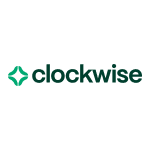
Clockwise uses AI to manage calendars better. It schedules meetings automatically to reduce interruptions. Teams get more uninterrupted time to focus on deep work. By analyzing calendars and scheduling patterns, the platform helps teams reclaim their time and improve work-life balance while enabling more efficient collaboration and deeper work periods.
Glean
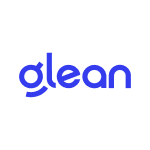
Glean serves as an AI-powered work assistant that connects all company knowledge in one searchable platform. Using advanced enterprise search technology, it retrieves the most relevant, up-to-date information and generates highly personalized answers grounded in the organization’s unique knowledge base. All answers are secure, permissions-aware, and fully referenceable back to source documentation.
Effy
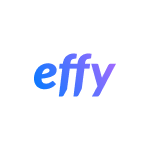
Effy streamlines 360-degree feedback and performance reviews using AI to automate participant matching, track completion, and synthesize feedback into detailed summaries. With Slack integration and customizable templates, HR teams can set up and run comprehensive review cycles in minutes, while real-time insights help managers understand development opportunities for their team members.
Employee Development
Gloat
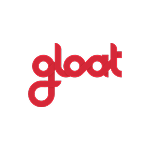
Gloat’s AI-powered talent marketplace contributes to internal mobility and career development by means of matching employees with relevant opportunities based on their skills, interests, and career goals. The platform fosters a culture of continuous learning and professional growth while helping organizations retain talent by providing clear paths for advancement and development.
BetterUp
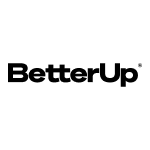
BetterUp mixes AI coaching with real human experts. The focus is on helping employees develop skills and stay mentally healthy at work. The platform uses advanced analytics and machine learning. It helps to assess individual strengths, challenges, and goals to provide personalized coaching sessions and resources. Through virtual coaching, goal tracking, and feedback mechanisms, BetterUp helps employees unlock their potential and improve performance.
Cloverleaf
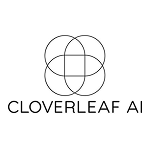
Cloverleaf transforms assessment results into actionable, personalized learning experiences delivered directly in the flow of work. The system sends small tech reminders to reinforce training. Employees build skills based on their specific situation and needs. Learning becomes relevant and timely. People can use new knowledge right away in their daily work.
TalentGuard
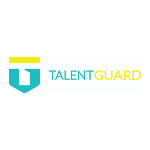
TalentGuard uses AI to help with career planning, finding future leaders, and tracking performance. The platform handles all these talent management tasks in one place. By analyzing employee skills, aspirations, and development needs, the platform helps organizations cultivate talent and retain top performers through strategic development initiatives and clear advancement opportunities.
Recruiting and Talent Acquisition
Findem
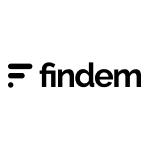
Findem uses AI to help companies find and keep good employees. HR teams get real data about talent trends and what competitors are paying. The platform spots patterns in successful hires and predicts which skills will be in demand next year. It warns when top performers might quit based on career progression data and market opportunities. Strategic workforce planning becomes less guesswork. Companies prepare for skill gaps months ahead instead of scrambling to fill urgent roles. HR teams spend less time sorting resumes and more time on actual relationship building.
HireVue
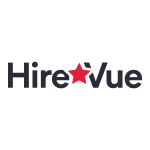
HireVue changes how interviews work. It uses AI to study video interviews. The system looks at facial expressions, tone, word choices, and how people communicate. This helps figure out if candidates fit the job well. The platform enables asynchronous video interviews with structured scoring criteria designed to remove bias from evaluations, helping recruiting teams reduce time-to-hire while improving decision-making consistency.
Textio
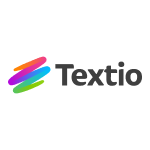
Textio harnesses AI to revolutionize job postings by analyzing language patterns and predicting candidate responses. The platform helps HR teams craft compelling, inclusive job descriptions that attract diverse talent pools while optimizing engagement and improving the overall quality of applicants through data-driven language recommendations.
ModernLoop
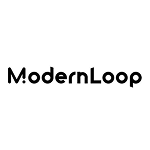
ModernLoop automates interview scheduling and management, allowing recruiting teams to focus on talent evaluation rather than administrative coordination. The platform features AI-powered scheduling, interviewer training capabilities, recruiting analytics, and seamless integration with existing tech stacks including communication tools and applicant tracking systems.
These 20 tools show the best of HR technology right now. Each one fixes specific problems. Together they make workplaces run better and keep employees happier. Companies using these tools see big improvements. Higher productivity. More satisfied workers. Better strategic HR results. This proves AI can really transform how human resources works. The technology keeps getting better. More organizations will adopt these solutions as they see the benefits firsthand.
The Future of AI in HR
The future of AI in HR is going to bring change that extends far beyond simple automation. As 76% of HR leaders acknowledge that organizations failing to adopt AI will lag behind competitors, we’re witnessing a fundamental shift in how HR creates value.
AI will fundamentally reshape workforce composition itself. HR professionals will soon manage hybrid teams including traditional employees, gig workers, and AI co-bots working alongside humans. Generative AI will assume full responsibility for specific tasks, requiring HR to redesign work structures and capacity planning to accommodate this new reality.
The role of HR professionals is evolving from administrative task managers to strategic AI adoption facilitators. As repetitive operational work disappears, HR will focus on supporting organization-wide AI implementation while delivering greater strategic business value. This transition will likely displace admin-heavy roles, making reskilling and upskilling programs essential.
Future HR professionals must develop critical new competencies including advanced business acumen, generative AI skills, and technology implementation expertise. Active listening and problem-solving capabilities become more valuable as humans navigate AI integration challenges. Communication skills remain paramount for connecting with diverse stakeholders during technological transitions.
Success means learning about AI while keeping human skills like empathy, creativity, and strategic thinking. These qualities can’t be replaced by machines. Companies that train their HR teams for this AI-enhanced future will have big advantages. They’ll be better at finding good people, developing talent, and keeping employees happy. The workplace keeps getting more complex. Organizations need both smart technology and smart people to succeed.
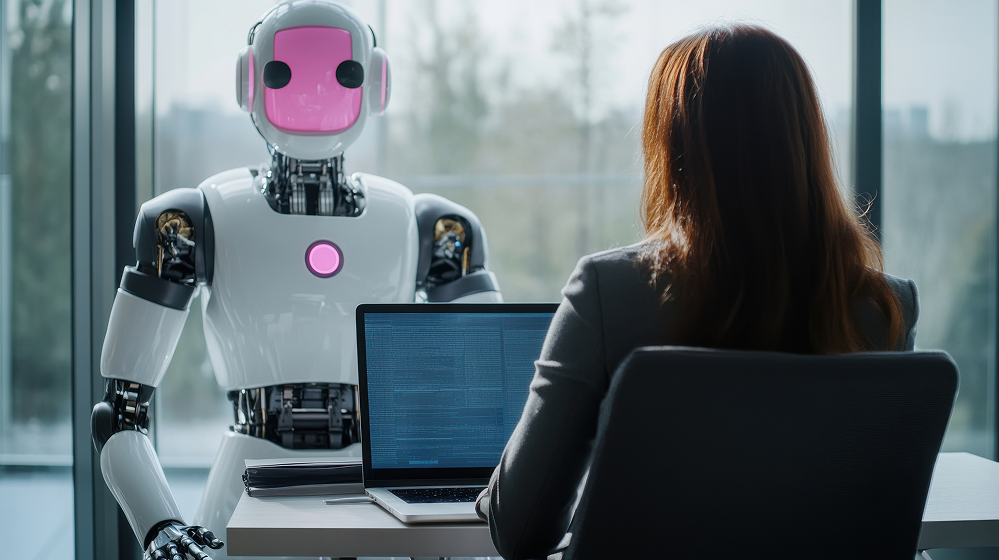
Building Your AI-Powered HR: A Step-by-Step Plan
Changing your HR department with AI takes time. You can’t do it all at once. You need a smart approach that builds success piece by piece. Start small and grow from there. This gives you the best chance of making AI work for your team. The most effective organizations avoid the temptation to overhaul everything at once, instead choosing strategic entry points that create momentum and prove value before expanding their AI footprint.
Pinpoint Your Breakthrough Opportunity
Every organization has that one HR pain point keeping teams up at night. Maybe it’s drowning in thousands of applications for popular roles, struggling to create personalized development plans, or wrestling with inconsistent performance feedback. These pressure points become your AI testing ground. Recruitment often provides the most dramatic results—imagine cutting screening time from hours to minutes while actually improving candidate quality. Employee development offers equally compelling opportunities through intelligent career path mapping and skill gap identification. Pick the area where success will be most visible and impactful.
Choose Your Technology Partners Wisely
The AI landscape is crowded with solutions that promise great results. Focus on platforms that match your current systems and you won’t have to rebuild everything. Look for vendors who can explain how their AI actually works—black box solutions create trust issues down the road. Prioritize partners with rock-solid security credentials and clear compliance frameworks. Whether you choose comprehensive platforms or specialized point solutions, ensure they can grow with your ambitions rather than limiting your future options.
Transform Your Team into AI Champions
The biggest implementation failures happen when teams feel left behind by new technology. Invest heavily in making your HR professionals comfortable and confident with AI tools. Create learning experiences that feel engaging rather than intimidating—hands-on workshops beat theoretical presentations every time. Help your team understand not just how to use AI, but when to trust it and when human judgment remains essential. When your people become AI advocates, adoption accelerates naturally throughout the organization.
Prove Value Before Scaling Dreams
Start with contained experiments that can succeed or fail without major consequences. Test AI-powered resume screening on your next intern hiring cycle. Try sentiment analysis during your annual engagement survey. Pilot intelligent learning recommendations for your leadership development program. Measure everything relentlessly—time saved, quality improved, satisfaction increased. These early wins become your business case for broader AI investment and organizational confidence builders for larger transformations.
This deliberate approach transforms AI from scary disruption into strategic advantage, creating sustainable change that enhances rather than threatens your HR effectiveness.
AI in HR: Frequently Asked Questions
AI changes every part of HR work. It screens thousands of resumes in minutes during hiring. Finds the best candidates fast. Even does first video interviews. Employee training gets personal now. AI creates custom learning paths for each person. It spots skill gaps before they hurt business results. Performance reviews work differently too. AI analyzes feedback continuously. Makes automated review summaries. Saves managers tons of time. Employee happiness improves through mood analysis. AI predicts who might quit before it happens. Companies can act early to keep good people. Admin work runs itself now. Payroll processing, benefits sign-ups, compliance checks. This happens automatically. HR teams focus on bigger strategic projects instead. The technology handles routine stuff. People handle the human connections. It’s working well for most companies so far.
Absolutely not. While AI excels at data processing and pattern recognition, HR’s core value lies in uniquely human capabilities—empathy, complex problem-solving, cultural interpretation, and relationship building. AI handles routine tasks brilliantly, but strategic decisions about workplace culture, sensitive employee situations, and organizational change require human judgment. The future isn’t AI replacing HR professionals; it’s AI amplifying their capabilities by eliminating mundane work and providing data-driven insights for better decision-making.
AI changes HR from guessing to using real data. It spots employees who might quit months ahead of time. Companies can take action early to keep them. Performance data shows patterns across teams that people might miss. Numbers reveal trends that gut feelings can’t catch. Decisions become based on evidence instead of hunches. This leads to better outcomes for both companies and workers. Compensation analysis ensures pay equity while maintaining competitive positioning. AI processes vast amounts of employee data to surface trends, predict outcomes, and recommend actions—giving HR leaders the insights needed for strategic workforce planning and targeted interventions.
AI systems can make existing biases worse. They learn from old data that might be unfair. This creates serious fairness concerns. AI systems can make hiring and promotion decisions that hurt certain groups without anyone realizing it. Companies need to audit their AI regularly for bias. The training data should include people from different backgrounds, not just one demographic. Human managers must still make final decisions about careers and promotions. Transparency matters most. Workers have the right to know when AI influences their job prospects. They should understand how these systems work and what data gets used. Clear policies help too. Companies need written rules about when AI can make recommendations versus when humans must decide. Employees should know they can appeal AI-driven decisions. The goal is using AI to improve hiring while keeping it fair for everyone. Algorithms must be accountable. Humans should make final decisions about hiring, promotions, and performance reviews. AI can help, but people must stay in control of important choices that affect careers and lives.
Responsible AI starts with clear rules about collecting, using, and storing data. Companies need written policies that everyone understands. Regular checks ensure fair outcomes for all employee groups. No one should get treated worse because of biased algorithms. Being honest about what AI can and can’t do builds trust. Employees need to know the system’s limits. Humans must oversee complex decisions. AI can suggest, but people should make final choices about careers. Privacy protection goes beyond just following laws. It’s about doing the right thing with employee data. Continuous monitoring keeps AI systems working properly. They should serve both employee and company interests. The human touch still matters most. AI should help people, not replace the personal connections that make workplaces work well.
Conclusion
The AI revolution in HR is happening right now. It’s changing how companies find, grow, and keep good people. Smart recruitment finds perfect candidates in minutes. Predictive tools stop valuable employees from quitting. AI reshapes every part of HR work. The question isn’t whether to use AI. It’s how fast and smart you can add these tools.
Success takes more than buying AI software. You need good planning, proper rules, team training, and knowing where humans still matter most. Companies that use AI while keeping the human touch will beat their competition.
Want to change your HR with AI? Our experts help organizations start their AI journey. We handle strategic planning, tool selection, setup, and team training. We’ll find your biggest opportunities. Create custom plans. Make sure your team can use AI well while keeping the human approach that makes great workplaces work.
